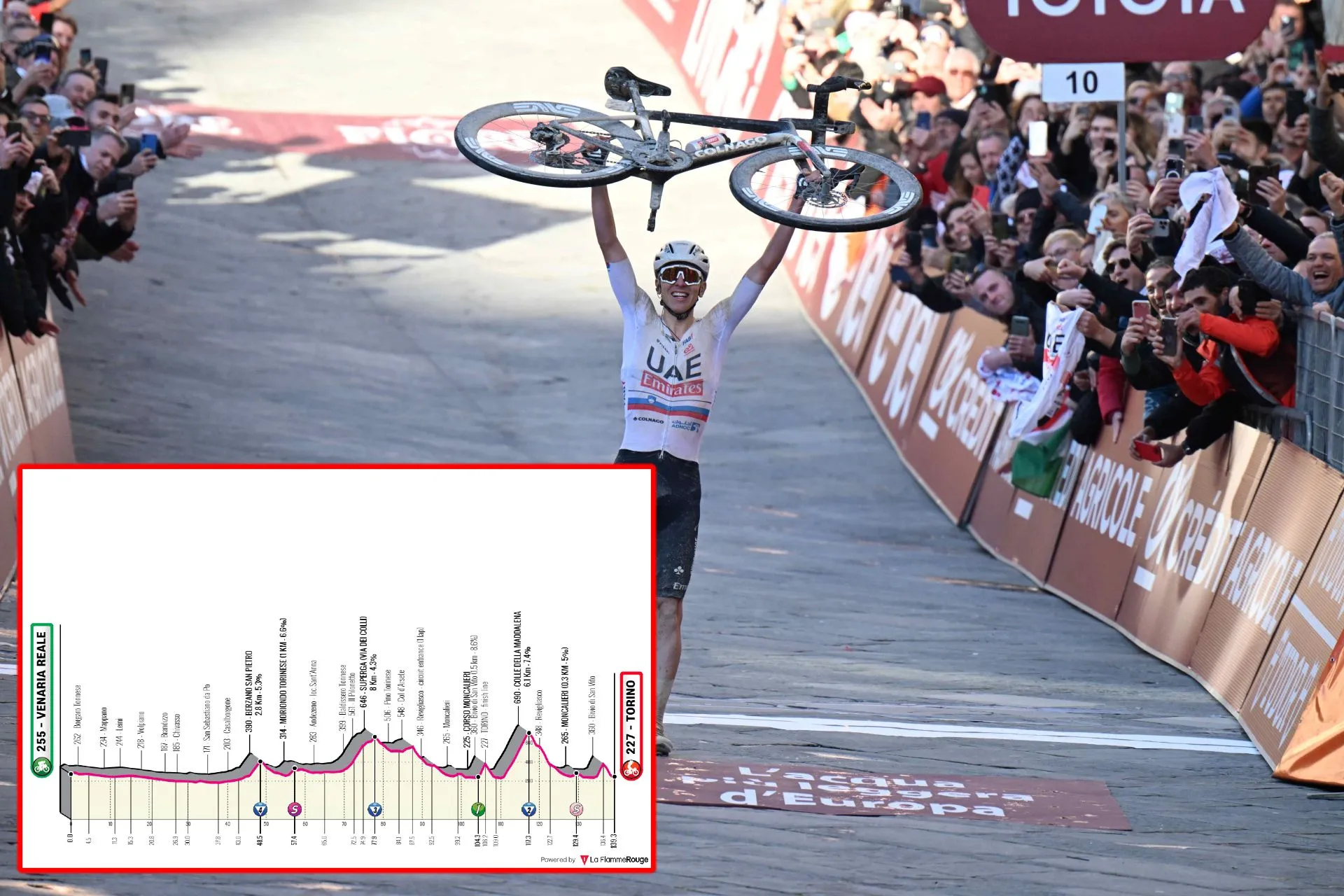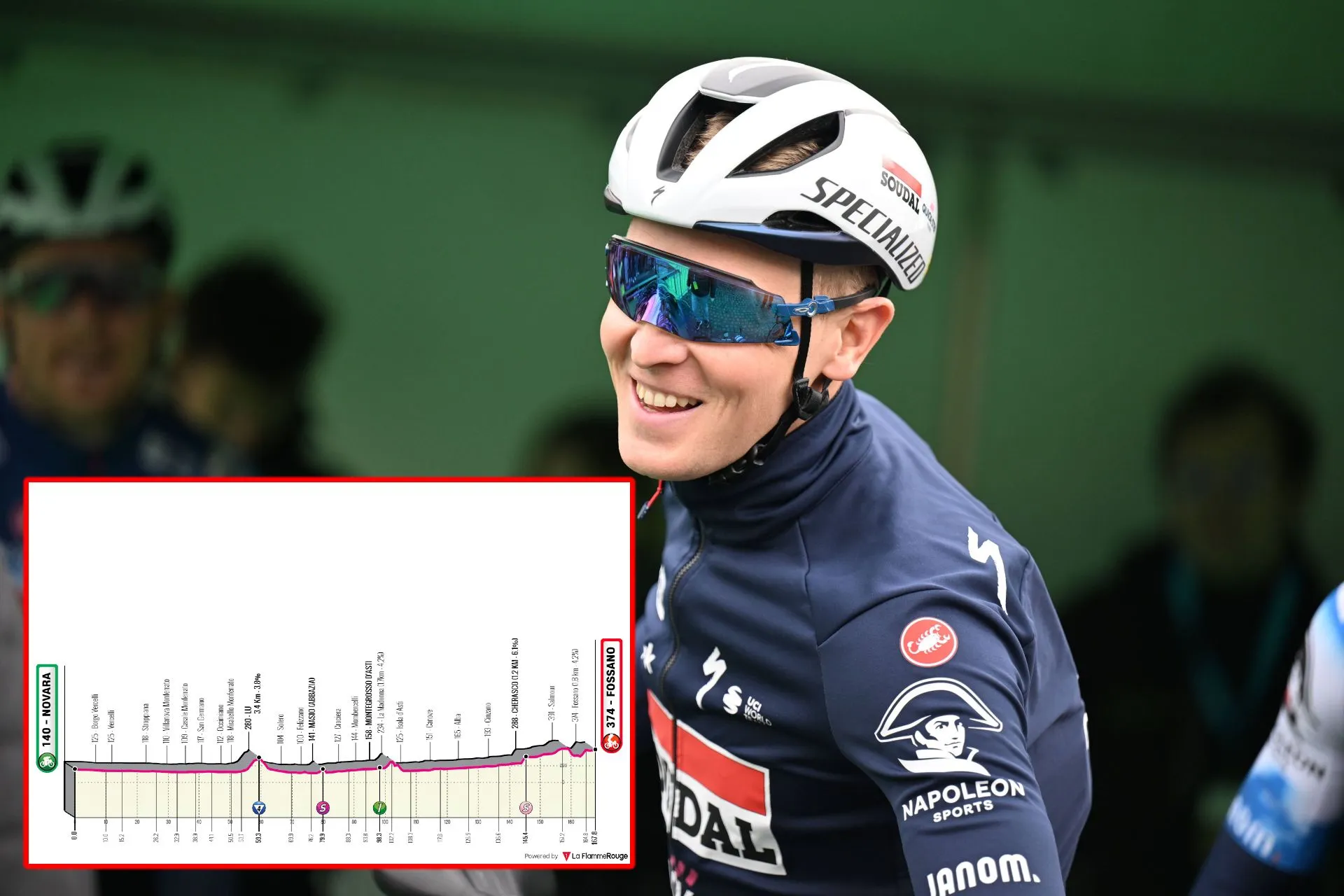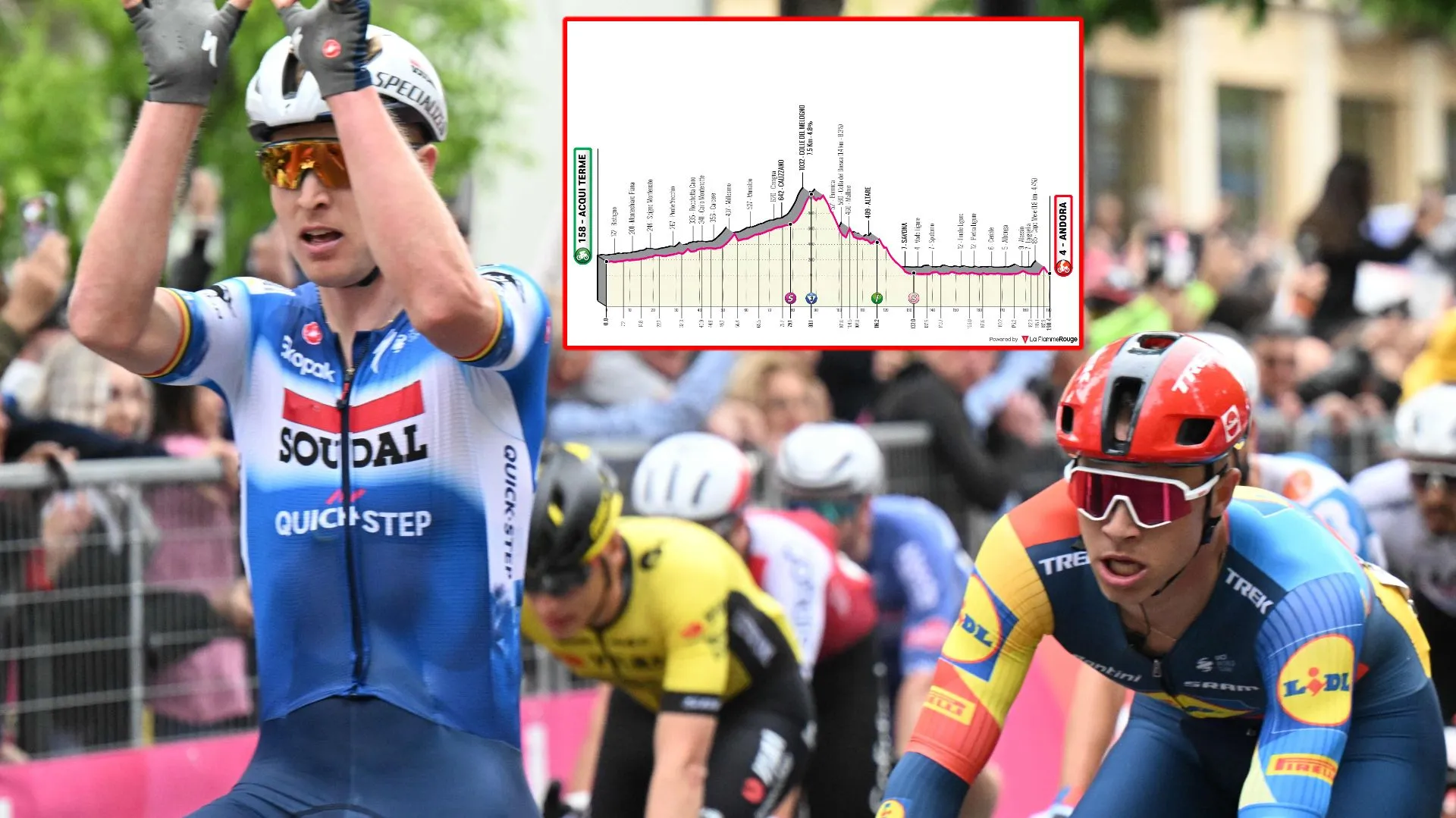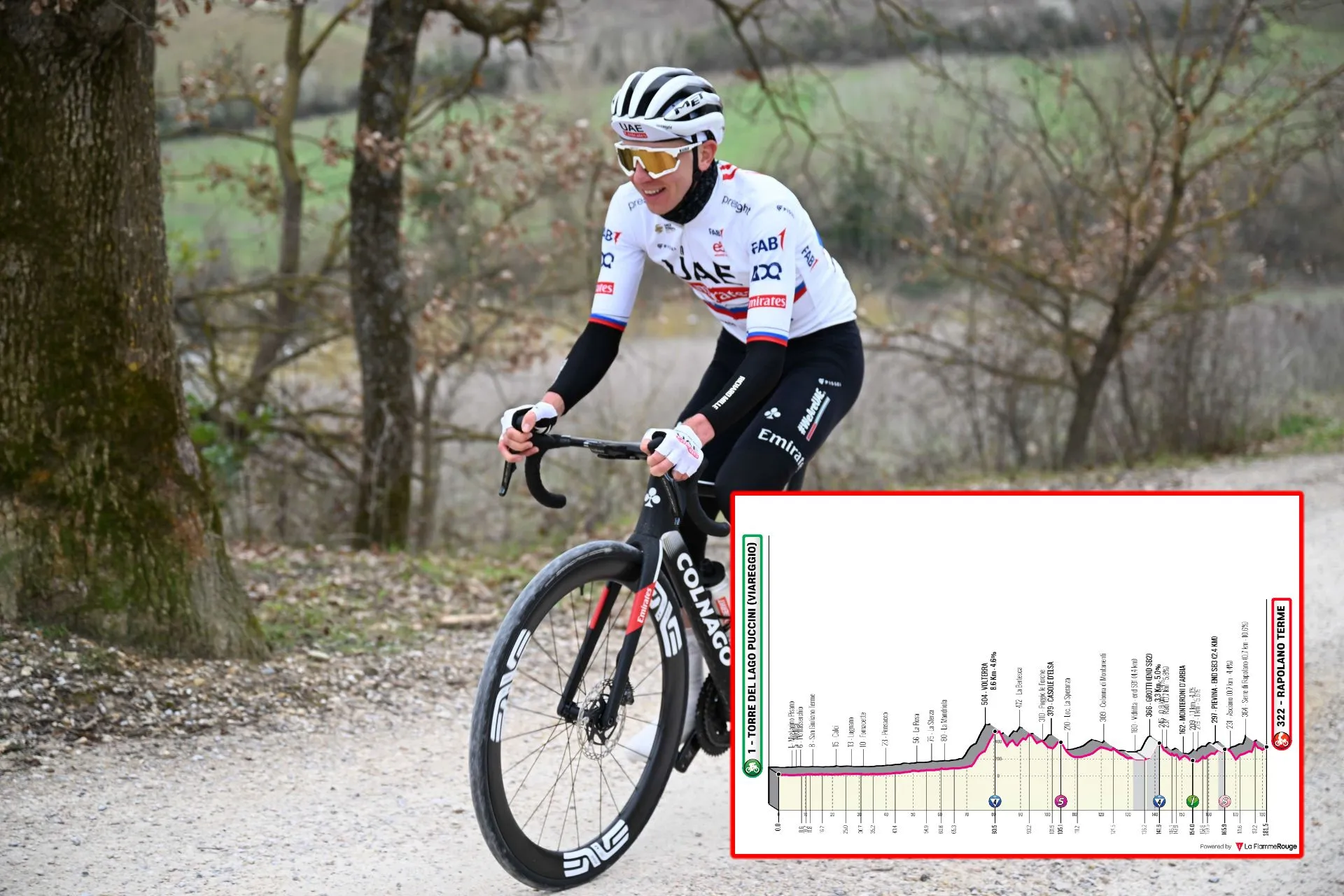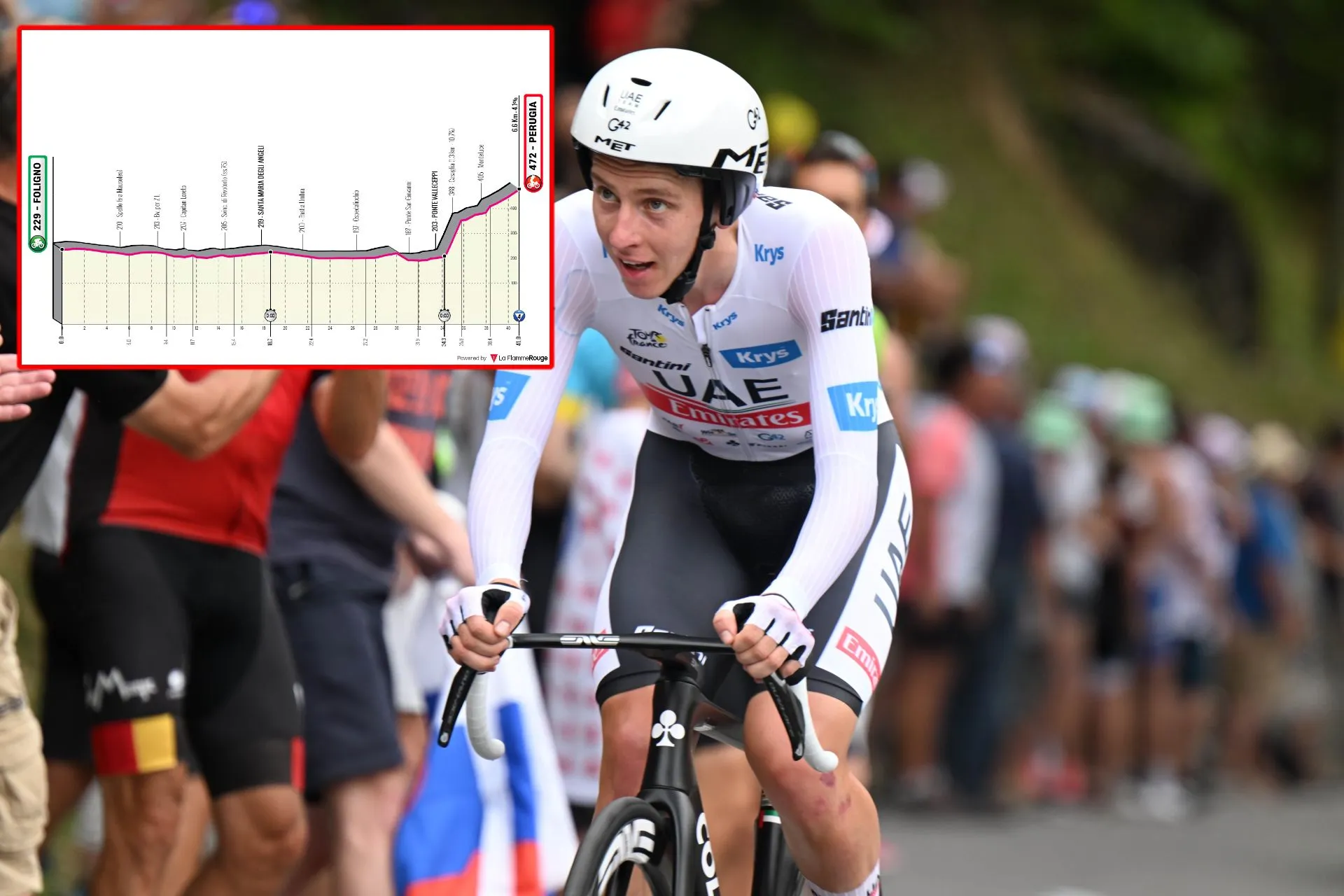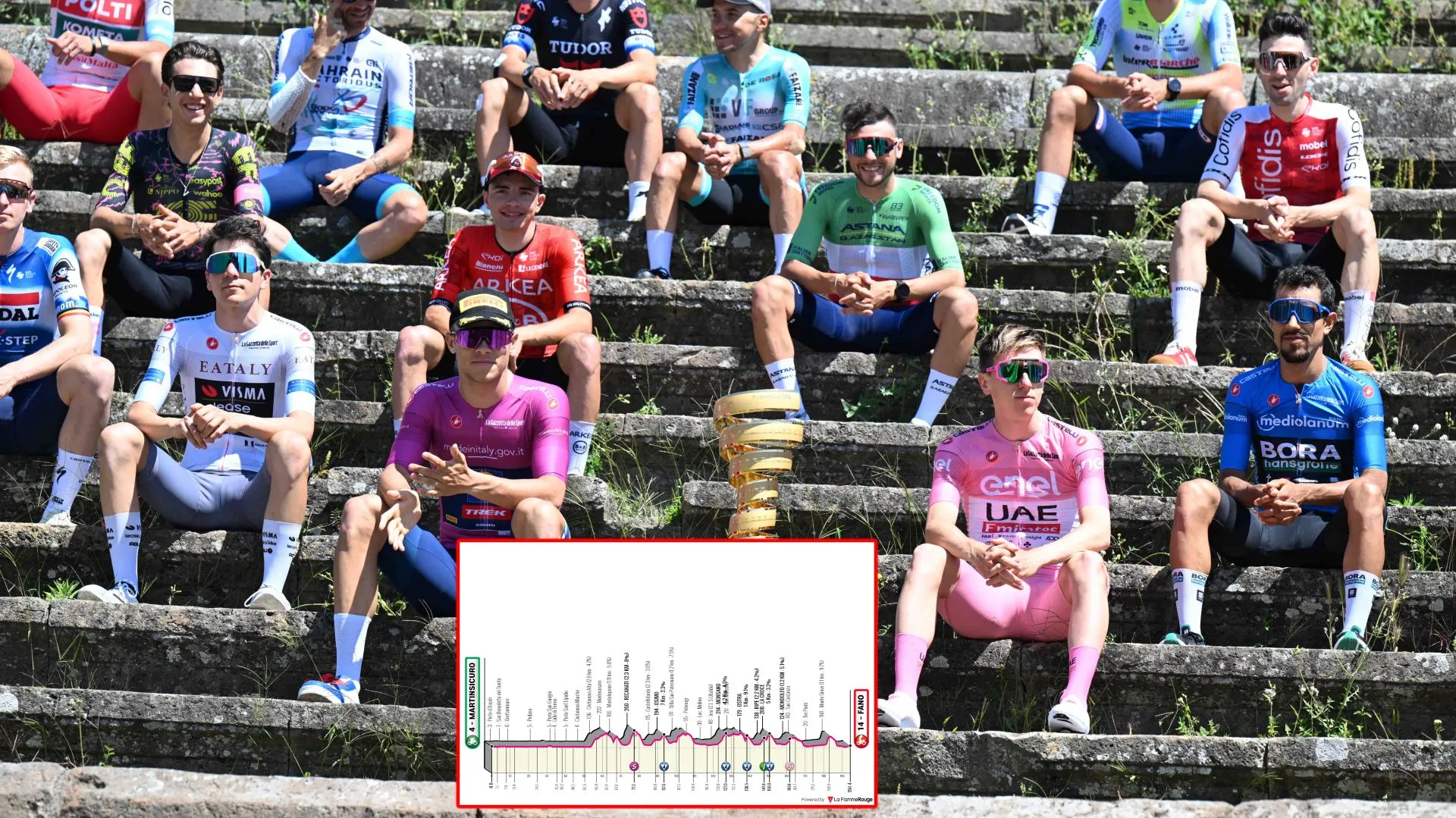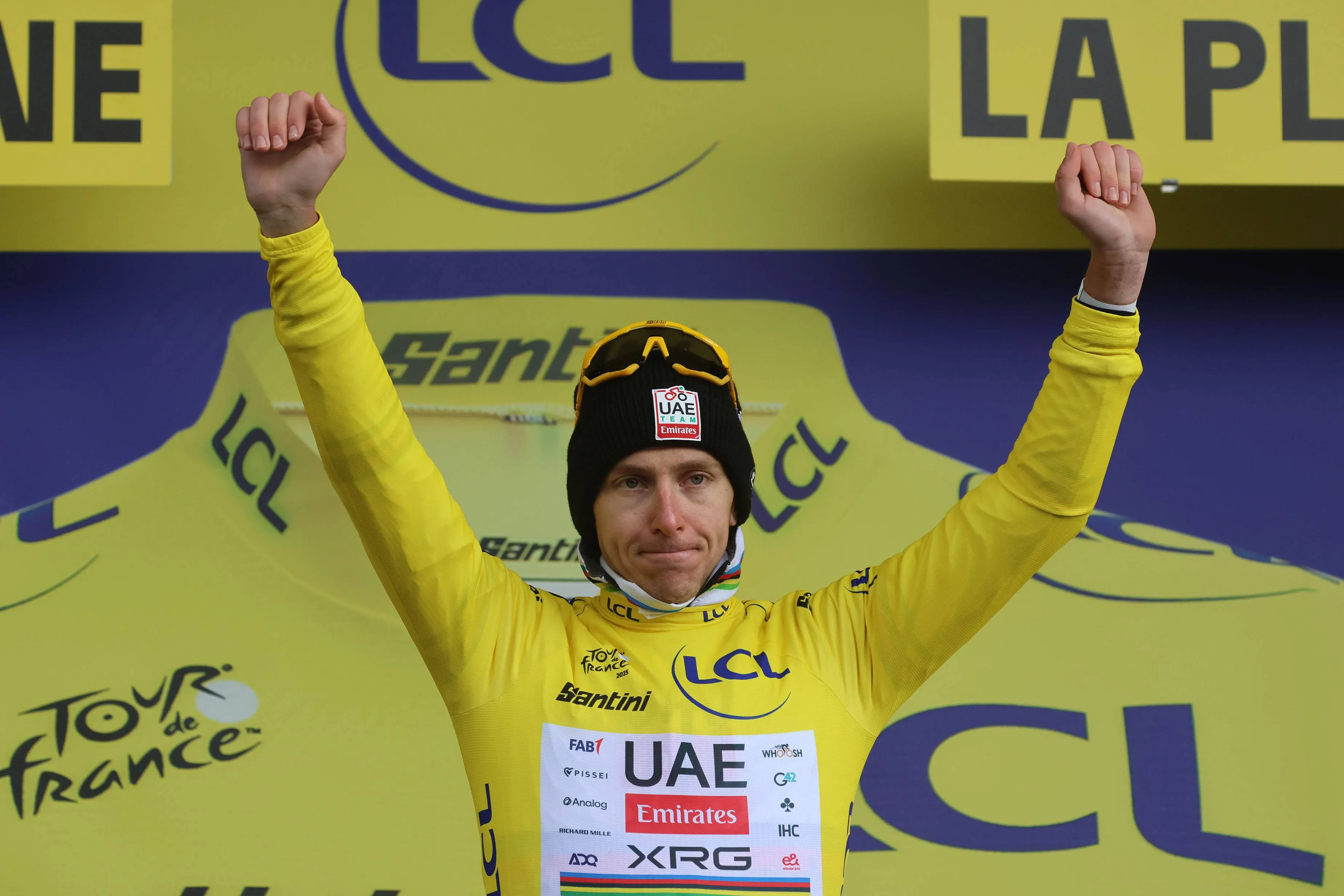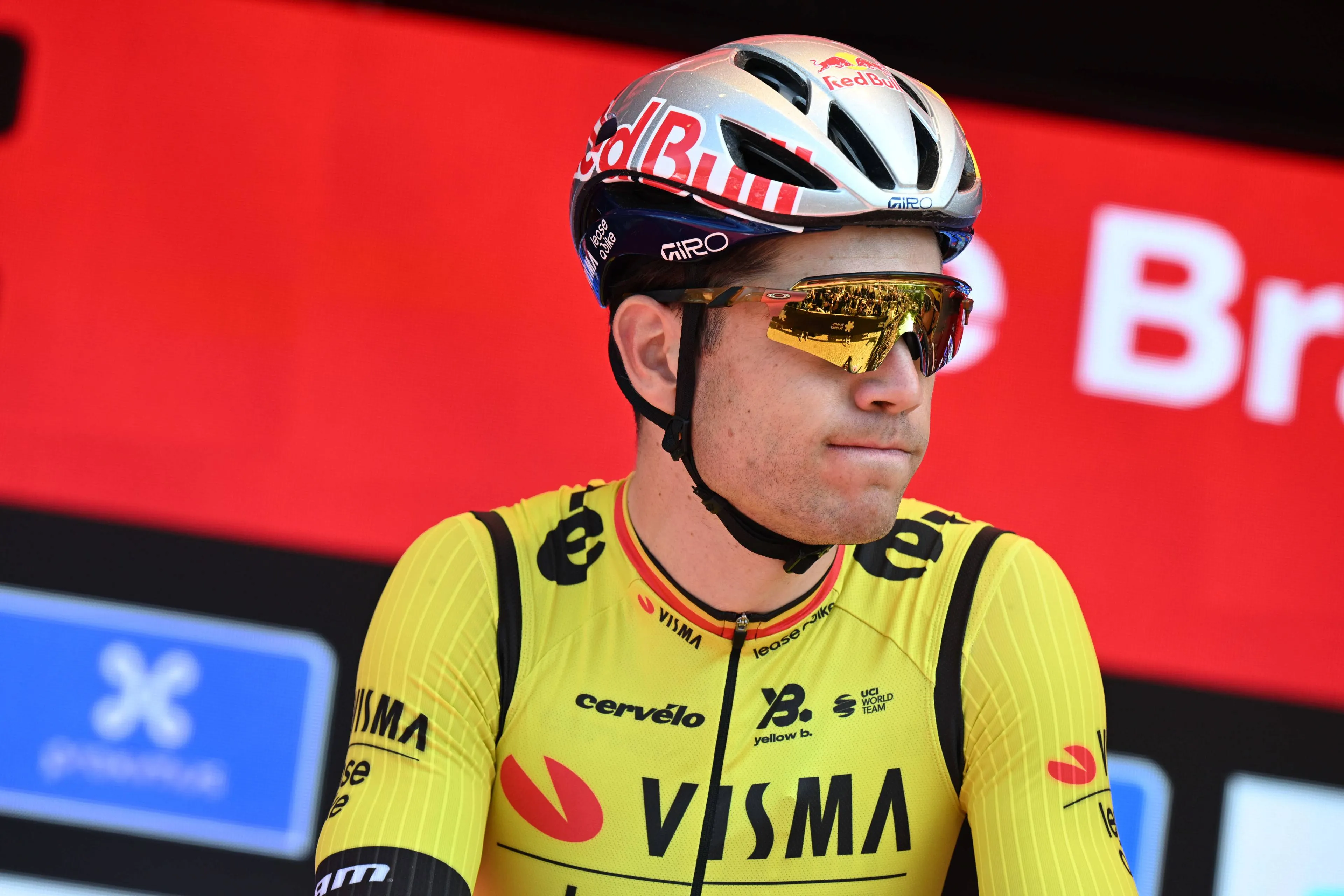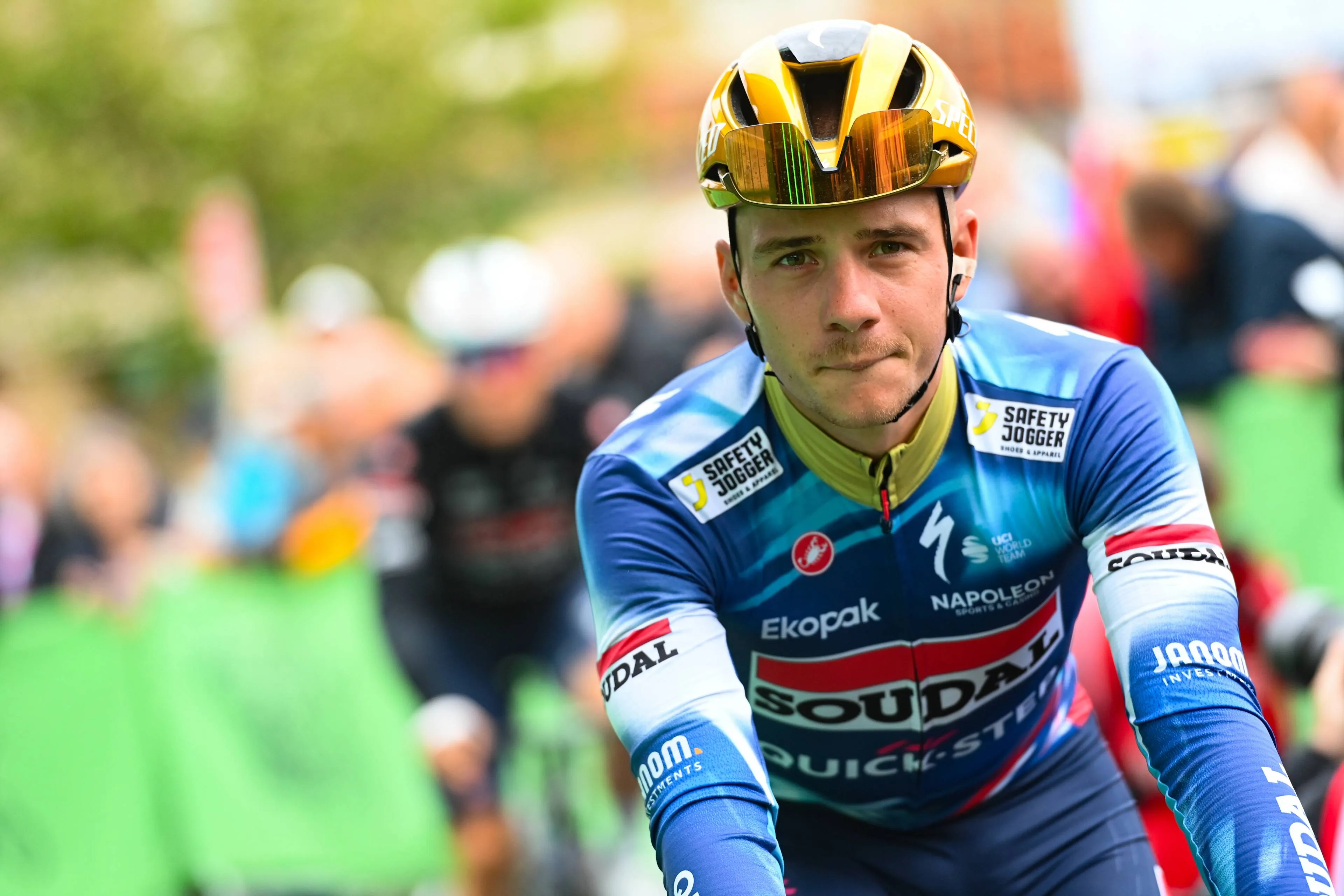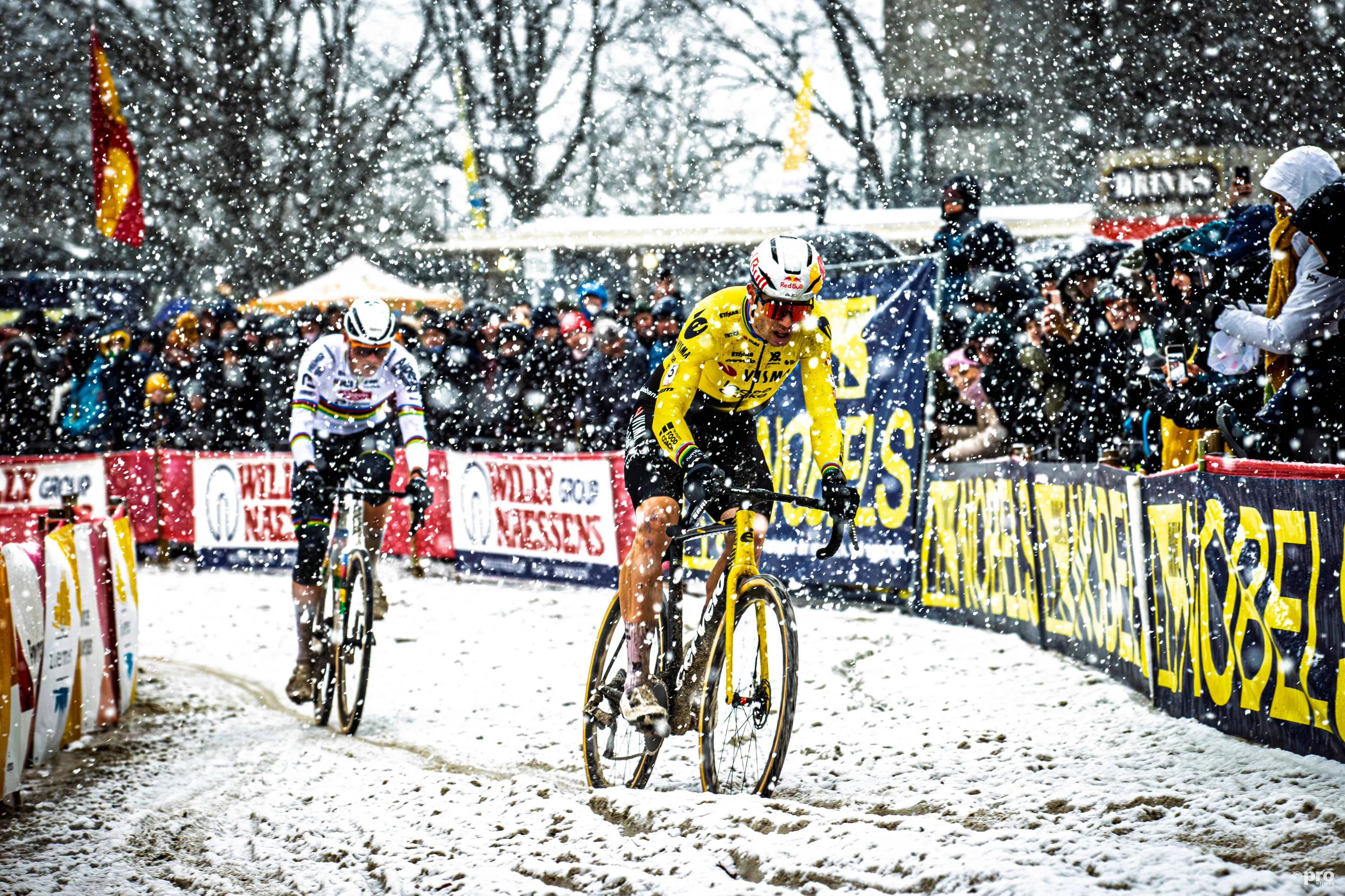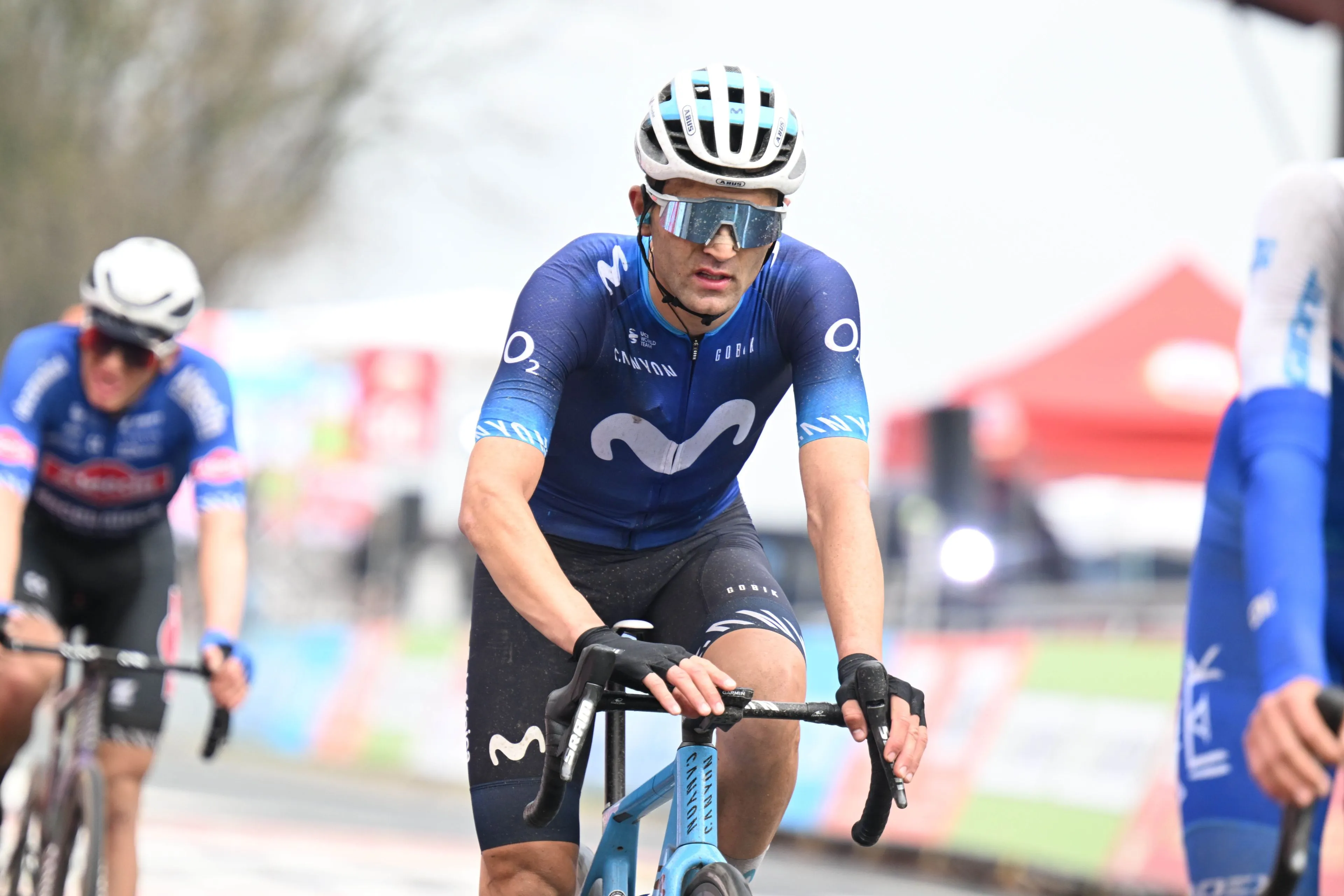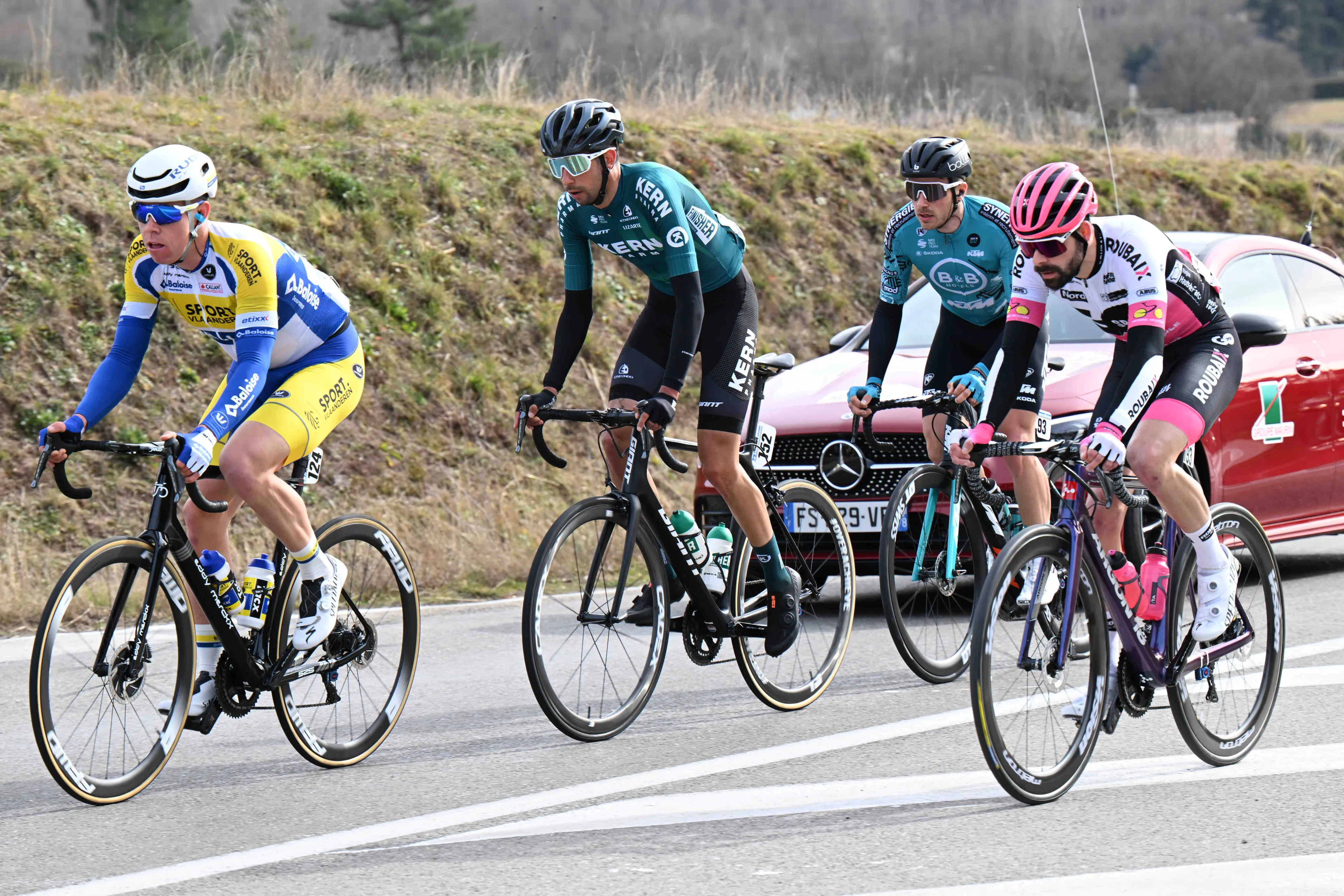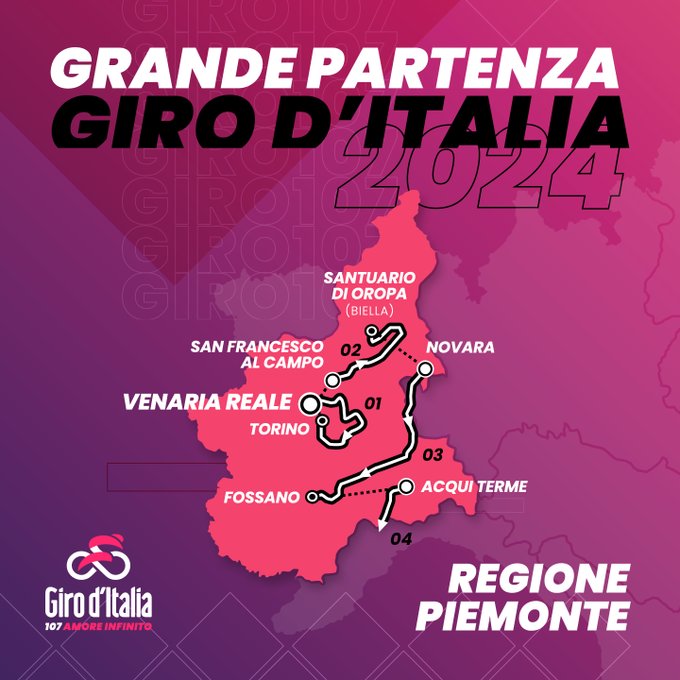Profiles & Route Giro d'Italia 2024 - 71Km of time-trial; Gravel; Stelvio and double Grappa ascent included
CyclingWednesday, 22 May 2024 at 19:56
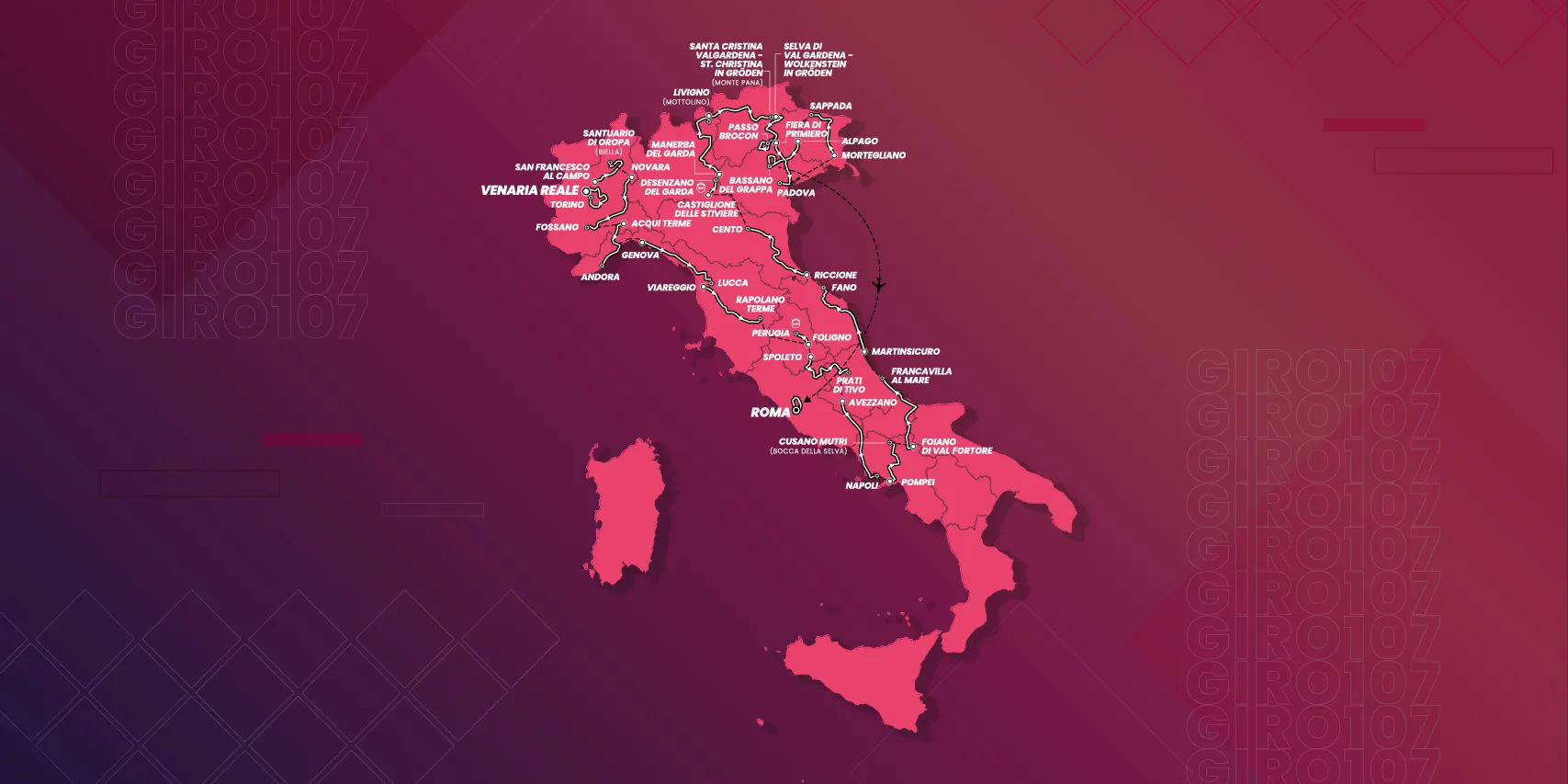
The 2024 Giro d'Italia will take place from the 4th to the 26th of May. The first Grand Tour of the season, the main goal of the season for many and one of the most spectacular and history-rich cycling races in the world. We take a look at it's profiles.
It is a route that, as usual, takes the riders through hell and back with 21 days of difficult racing that include many summit finishes, many climbs at high altitude; brutal days in the mountains; gravel roads and exciting hilly stages alongside bunch sprints and two long time-trials.
Read also

Stage 1: Venaria Reale - Torino, 136 kilometers
The race starts off with a short and explosive stage into Torino. The Grande Partenza takes place in the city of Venaria Reale in 2024 and the first day is open to many scenarios. Climbers, puncheurs and sprinters can all be in the mix. The day features three ascents that are noteworthy and a total of 2000 meters of climbing. Not too difficult, but the hardest sections are localized in the final hours of racing.
A few ascents will come beforehand, but the real action begins at the Colle Maddalena. It will be far enough from the finish that the race can be reshaped afterwards, to attribute the first pink jersey. This climb is over 6 kilometers at 7% (depending on which race map you count with) and ends with 22 kilometers to go. Not an overly hard climb, but with some strong pace the sprinters will mostly be dropped. This provides opportunities for attacks as well.
A climb close to the finish, which is 1.5 kilometers at 8.6%, could see the decisive attack for the stage win. This is the last-minute addition of the hilltop into San Vito. It changes the stage completely, riders will now certainly focus on this ascent as it is hard enough to make differences. Few will risk attacking beforehand. This climb has gradients go as high as 16% close to it's summit which comes with only 3 kilometers to go.
A downhill finale will follow, very quickly the riders reach Torino and only the final meters will be flat. Gaps over the top, an attack in the climb, can be decisive to attribute the first stage win.
Read also
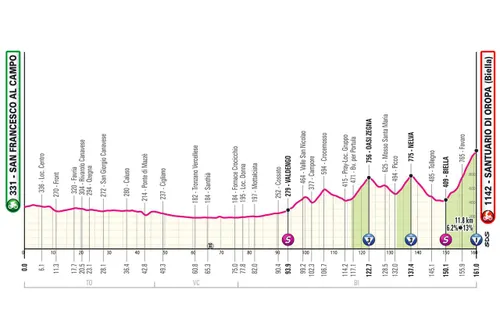
Stage 2: San Francesco Al Campo - Santuario di Oropa, 150 kilometers
Stage 2 is the first day in the mountains and it will not be easy by any means. 150 kilometers on the menu, the first half flat, the second with five ascents. Two uncategorized and two categorized - 5.7Km at 5.1% and 3.2Km at 6.5%, which will be a warm-up for the first summit finish of the race. This will be the return to a climb made famous by the likes of Marco Pantani and Tom Dumoulin in the past.
This will be at the Santuario di Oropa. Last used in 2017 with Tom Dumoulin's epic win, it'll be a climb well known in the peloton. It's 11.8 kilometers at 6.1%, but the first third is considerably less steep. We'll see gradients close to 10% for several kilometers towards the scenic finish, and perhaps the first meaningful gaps of the race.
This early in the race and at the end of a short and not overly hard stage, it should be a very explosive climb where speeds will be very high. Differences can be made in it's toughest sections a few kilometers from the finish; whilst the final meters will be on a beautiful cobbled road up to the sanctuary.
Read also

Stage 3: Novara - Fossano, 165 kilometers
Stage 3 is the first day that can be properly called to be one for the sprinters, however far from a simple one. Most of the day is flat, but the run-up to Fossano will not be easy. Most of the day will be a calm stroll through Italy's Po Valley, heading southwest. A transition day and the first that will suit the contenders for the points classification.
Nothing much to analyze sincerely, all of the focus will be in the final kilometers towards Fossano. We've got a climbing and a technical aspect to the finale. A small hilltop will be present in the final kilometers. Summiting with 1.5 kilometers to go, the riders will tackle a 1.8-kilometer ascent at 4.2% which can take out a few riders from contention.
The climb will feature a few switchbacks, it can be a launchpad for late attacks; but also to drop or put some sprinters on the limit. There will then be 2.5 kilometers to the finish where organization is possible, attacks are possible... But a bunch sprint remains likely. The sprint will not be technical and will be pan-flat.
Read also
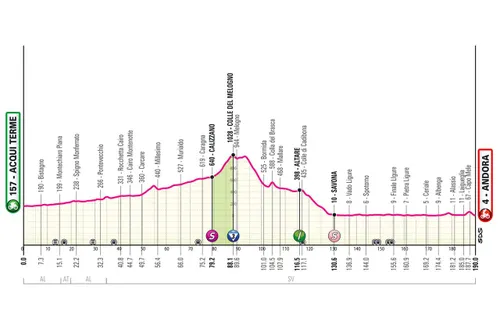
Stage 4: Acqui Terme - Andora, 187 kilometers
Stage 4 will take the riders in the Ligurian region. I call this a mini Milano-Sanremo and with very good reason. Not only is the profile almost identical to the Italian monument, but the final kilometers follow roads familiar to the peloton, and the finale in Andora takes place inbetween two of the 'Tre Capi'.
This is a 187-kilometer day on the bike, not too big but not short either. The start takes place in Acqui Terme at 157 meters of altitude and the riders will go above 1000 meters in the first two hours of racing. Right after the intermediate sprint comes the sole climb of the day: Colle del Melogno which is 6.8 kilometers a 5%. However, this will not likely have much effect on the stage, but only adding some fatigue.
The riders descend into the coast and then head into Andora. They will climb, right before the finish, a famous ascent of Milano-Sanremo: Capo Mele. The ascent is a big-ring climb, it's 1.8 kilometers long at 4.4% and summit with 2.5 kilometers to go. An almost identical finale to the previous day, the climb may see attacks but most likely just a thinning down of the front of the peloton.
Only this time the approach to the finish is not flat, but very fast and downhill. Through a very fast and non-technical descent, the peloton will find itself racing at extremely high speed into the final 750 meters which will be flat and straightforward all the way into the finish line for what should be a dramatic bunch sprint.
Read also
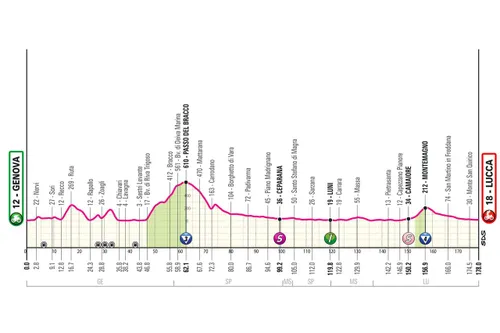
Stage 5: Genova - Lucca, 176 kilometers
Stage 5 will be another day for the fast men. After start that was anything but friendly to the sprinters, the fifth day of racing also presents little obstacles to a bunch sprint in Lucca. With 2300 meters of climbing, it's by no means a pan-flat day, but the sprinters can be happy with what is a day designed for them.
The first 62 kilometers feature some climbing that is not easy, it does provide an opportunity for a breakaway to go up the road with quality riders, whilst the uphill sections pressure the sprinter teams into taking it easy; which can see the gaps rise dangerously ahead of a very fast and mostly pan-flat final two thirds of the stage.
A small hilltop come with 22 kilometers to go, it's 3 kilometers at 4.3%... Not hard enough to drop sprinters this far from the finish, it should just be a regular ascent. A bunch sprint will follow in Lucca. It's not an overly technical finale but it isn't simple, moving through a ring road around the historic center of the city. It features a few roundabouts and fast corners, in a finale that will be flat and perfect for the specialists.
Read also
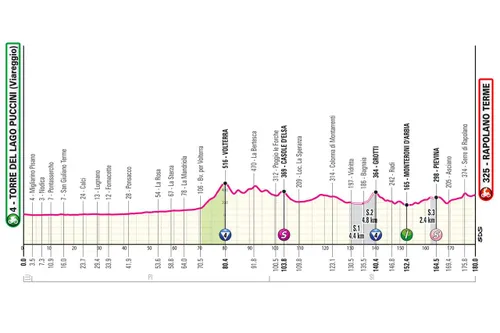
Stage 6: Viareggio - Rapolano Terme, 177 kilometers
Stage 6 ill be a very tricky day, one that perhaps flows under the radar of many. After some climbing there will be some definition in the overall classification but on this day the tension will be very high. As is the case in the Tour de France, the Giro d'Italia will also feature gravel racing. In Tuscany, around the city of Siena which hosts every year Strade Bianche; the peloton will find a challenge that is very different to the regular mountain stages that decide the overall classification.
A flat start in Viareggio, but after 70 kilometers it changes, with a few rolling climbs on the menu. All of the attention will be on the big gravel sector (which are two, separated by only a few paved meters actually). With 50 kilometers begins the unpaved spectacle; with a 4.4-flat sector opening things up. Right after follows one with 4.8 kilometers in length which ends with 40 kilometers to go at the summit of a 2.5-kilometer climb at 6%.
10 straight kilometers of gravel racing which feature a relatively tough climb are enough to see big moves, mechanicals, punctures or splits. The race can break apart completely here. What follows are roads that go up and down constantly, are twisty... Hard to put on a chase, favourable for those who want to attack. But there will still be several difficulties.
The 2.4-kilometer gravel sector into Pievina has an intermediate sprint in it's finale and goes both up and down despite the short distance. It is another launchpad for attacks, or plenty things that can go wrong for some riders. Afterwards the roads won't be flat, but still, the toughest climb of the day is yet to come. Into the small town of Serre di Rapolano is 700 meters at 10% and feature a ramp of 22% into the summit.
A brutal little Italian ascent where attacks can come. Fatigue will be set in at this point and all over the place, differences can be made. This comes with only 4 kilometers to go. A small descent follows, but we still have some uphill gradients in the final kilometers including a false-flat ramp to the line.
Read also

Stage 7 (ITT): Foligno - Perugia, 40 kilometers
The seventh day of racing presents the first and longest time-trial of the race. 40 kilometers between the cities of Foligno and Perugia, a day that is crucial for the overall classification.
It is a relatively simple time-trial, up until a certain point. The first 34 kilometers will be flat and straightforward where riders can set a consistent pace and will have over half an hour here to make differences. It will be meaningful, but the last 6 kilometers of the effort could be just as important.
No bike switching is expected, but the final climb will start off with 1.3 kilometers at over 10%. This is serious, it's climber territory, and after the summit is a relatively constant uphill drag to the line. This will be a hard effort to measure, it features different sections, you can maintain a constant power output but certainly it will be key to save a lot for the final climb. An interesting mix of specialists and stage-racers will take over the Top10 on the day.
Read also

Stage 8: Spoleto - Prati di Tivo, 153 kilometers
Stage 8 sees the riders finally return to the mountains. It's a very hard day too with climbing from start to finish which features 3600 meters of ascent. Those who have raced the Giro d'Abruzzo will have fresh memory of this ascent; but it is also one that is frequently used in Tirreno-Adriatico. It will be the highlight of the day in the Apennines.
Early in the day we have a slight ascent, and if the breakaway isn't formed in there then it can in the Forca Capristello. The 16-kilometer climb features some relatively steep sections, it is difficult and a seriou attack here from a strong group will be very hard to control. It serves as an ideal launchpad for a strong breakawaty to go up the road.
Such breakaway would then be able to keep it's gap relatively well as the day continues to go through gentle climbs until the final one. This will include the Croce Abbio, the penultimate climb of the day, which is 8.1 kilometers at 4.1% and summits with around 40 kilometers to go. The way into Prati di Tivo is fully downhill from there onwards.
The brutal summit finish at Prati di Tivo is more commonly known to headline the Tirreno-Adriatico route, but this year it'll have a pink jersey to award at it's summit. After a day in the mountains, the 14.6-kilometer ascents that averages 7% will create differences with no doubt. It is a consistent climb, but one where serious gaps can be opened.
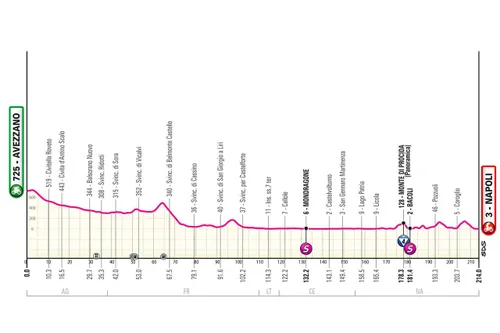
Stage 9: Avezzano - Naples, 206 kilometers
The final day of the first week sees the riders back into Napoli. After the success of the two past years, the city hosts another stage finish with a similar formula. A day for the sprinters but with enough climbing to launch questions. Despite it's long distance, it's a day where we can expect high speeds as the riders start off at over 700 meters of altitude and finish at sea level, without any meaningful climb of the menu.
In the past, a day designed for breakaway success into Napoli. This time around the sprinter teams have the upper hand, even if the weather plays a role on the day - it always can in this region. The final hour of racing will feature a few hilltops but likely none that can make a difference in the peloton. 3.7Km at 3.1% (36Km to go), 1.1Km at 6.7% (27Km to go), 2Km at 4.9% (19Km to go) and finally 3.2Km at 4.4% (7Km to go) will be the hilltops the riders face before the expected final sprint.
A little reminiscent of Milano-Sanremo honestly in it's finale, but a little more sprinter friendly. Don't expect any team to go wild either pacing and attacking as UAE did in March. However, don't expect all sprinters to cruise through. With high pace, they certainly can put some riders into difficulties. With a few downhill kilometers (and only 3 flat towards the line) some riders may want to attack the final hilltop and try to then survive or take advantage of some lack of organization.
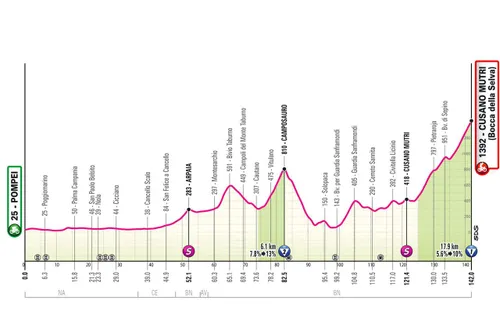
Stage 10: Pompei - Cusano Mutri, 141 kilometers
Stage 10 opens up the second week and presents a rather unknown summit finish. A short day on the bike only with 141 kilometers, but it ends at Cusano Mutri, a climb that could deliver more spectacle and differences for the overall classification. The first 45 kilometers of the stage are pan-flat, not ideal for a strong breakaway to go up the road; although the day could well end up tilting towards one.
On the way to the finish the riders find the difficult Camposauro which is 6.1 kilometers long at 7.8%. It still comes 60 kilometers away from the finish, don't expect any serious action here. A few more smaller climbs will be ridden into the final ascent. None on this day are steep, but the constant up-and-down can lead to an interesting outcome in the finale.
Cusano Mutri is the star of the day, the climb is 17.9 kilometers at 5.6%. But they are not constant, this average doesn't represent the real difficulty of the climb. It's maximum gradient of 14% is in it's first kilometers, we've got 6 kilometers at 6% close to the start. Don't expect attacks here however, as there is a small downhill section entering the second half of the climb.
The moves will come in the final 6 kilometers which will average a rather constant 7%. Here yes, differences can be made, slipstreaming won't matter too much and the riders find a road where the overall classification can suffer changes.

Stage 11: Foiano di val Fortore - Francavilla al Mare, 203 kilometers
Stage 11 sees the riders close to the Adriatic sea, a transition day of 203 kilometers into Francavilla al Mare where the sprinters will have the chance to shine. The peloton will have to be careful early on in the day to prevent a strong breakaway from setting off however as we face two ascents (6.5Km at 3.6%; 7.6Km at 5.9%) where a quality group can go up the road. At this point in the race, teams start to feel the pressure to win a stage and put in more resources to try and win this way.
The reason why this is dangerous is that in the second week of the race, less sprinter teams will commit to work as they know their place, fatigue sets in and some teams are missing riders. The peloton will descend from 650 meters in altitude to sea level and then face almost completely flat roads all the way to the finish, which means high speeds, where cutting the gap of a strong group is difficult.
However, we can assume the biggest chances on the day will always lie in a bunch sprint in Francavilla al Mare. One that won't be technical either. The final corners come with over 2 kilometers to the finish and from there on it's a fully straightforward dash to the line right by the coast. The riders can be exposed to the wind however, it can be a tactical one.

Stage 12: Martinsicuro - Fano, 183 kilometers
Stage 12 from Martinsicuro to Fano will be a tricky day. It features six categorized climbs - all of them small - and a few others. It's a day that is not too hard for a sprinter to take the win, but the combination of ascents will see breakaway specialists and classics riders try out their luck.
An explosive day, rather typical from the Giro I would say. In the hilly coast of the Adriatic we find plenty short and sharp climb that will make for an interesting day of racing with many scenarios that can lead to a victory.
The final sequence of climbs, starting from the second fourth category ascent, is as follows: 4.3Km; 4.4 (72Km to go); 900 meters at 9.9% (56Km to go); 4.8Km at 4.3% (44Km to go); 1.2Km at 5.1% (33Km to go). If the breakaway is to fight for the day, these ascents - but mainly the roads inbetween - will allow for attacks from some of the less strong climbers who will look to anticipate the final ascent, and win by the means of tactical prowess.
This could well happen. The final ascent is the hardest, but not overly difficult. The hilltop to Monte Giove is 1.2 kilometers long at 9.2% and summits with only 13Km to go. It's gradients go up to 18%, it can create differences in any group and decide the outcome of the stage. Following a small plateau the riders quickly descent into the final flat 6 kilometers, where teams can still work for a sprint to come to be.
Read also
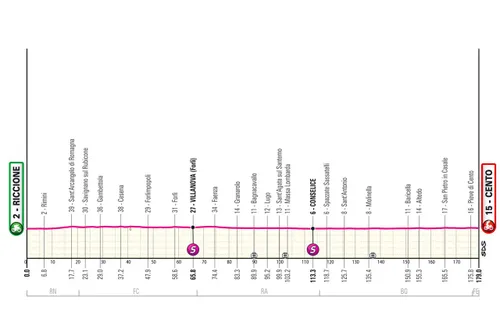
Stage 13: Riccione - Centro, 179 kilometers
Stage 13 is the flattest day of the race with no doubt. The 179 kilometers between Riccione and Centro will pass by quite quickly for sure, without a single hilltop on the day to slow down the riders or be a serious challenge to a possible bunch sprint.
Hence, there is very little to take a look at. The wind is also unlikely to play a role in this day through Emilia-Romagna, and all eyes will be on the final sprint in Cento. This will not be an easy one...
Already with 3 kilometers to go the riders will be in Pieve di Cento with a few urban corners where the peloton will stretch, there will be a fight for positioning to this location. Then in the final city, there is a meaningful chicane with 1.5 kilometers to go, a sequence of corners that will be key for positioning. Recovering positions now will be complicated as the riders will do some slight turns all the way into the final 500 meters.
Only then is the run-up to the line straightforward, but the riders have only a few seconds before the final sprint. A fast and furious sprint awaits us as the peloton comes fresh off an easy day on the bike.
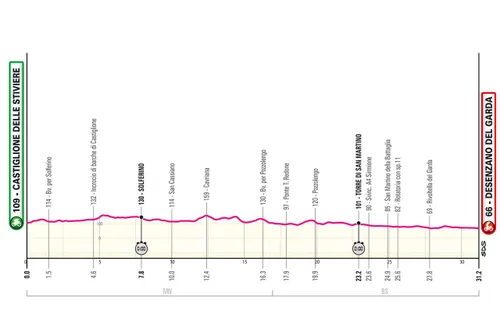
Stage 14 (ITT): Castiglione delle Stiviere - Desenzano del Garda, 31 kilometers
Stage 14 is the second and final individual time-trial of the race. It is 31 kilometers long and flatter than the first. It will create some more gaps before the riders finally reach the Alps.
This one is quite more simple than the first time-trial of the race however. Although not completely flat, it does feature some small ascents, it will be nothing crazy and nothing that will require small gears. A more constant effort where the specialists can really make the difference. This will be an important day for the overall classification and most likely change the overall classification around as well.
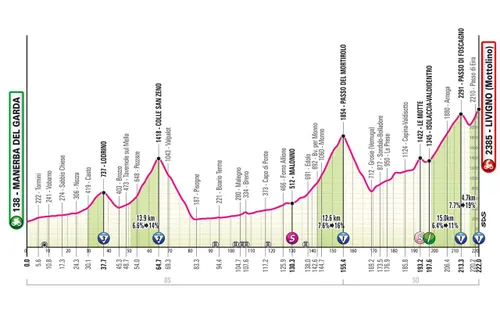
Stage 15: Manerba del Garda - Livigno, 222 kilometers
A Giro classic (when it comes to the formula, not the location). With 222 kilometers in distance it's the longest day of the race and perhaps the toughest too. Starting in Manerba del Garda the riders will find a tough start, but it's the final combination of climbs that will cause serious damage. Early on some flat roads, then two ascents: Lodrino which is 7.3-kilometers long at 4.5% and the Collde San Zeno (13.9Km; 6.6%). A breakaway of strong climbers can be formed here.
In any way, it will start a day of hard climbing for everyone. The day won't feature brutal ascents, but the repeated long efforts will be damaging. The Passo del Mortirolo will be next in line, the riders won't go through it's hardest side but it will still be a decently hard ascent. 12.6 kilometers at 7.6%, it summits with 67 kilometers to go. Many will be dropped here, whilst the very technical and steep descent provides an opportunity to surprise and split the peloton.
A slight rise will then follow, the riders climb significantly actually before even reaching the base of the Passo di Foscagno. It's 14.6 kilometers at 6.3% but the riders will already start it fatigued. The ascent is relatively constant, it summits at almost 2300 meters of altitude and is only 9 kilometers away from the finish line. Attacks are expected, this is the main ascent of the day where the GC riders will surely go all-out.
But it's not the last climb of the day. A small but very fast descent will follow, into the base of Mottolino. Just outside of Livigno, the riders will climb to the ski station through a small road wich is 4.7 kilometers long at 7.3%. This climb can still make differences, it is also difficult enough for that (specially as the last half of the ascent sees a meaningful portion above 10%), but also the summit finish is located at almost 2400 meters of altitude where a few riders may struggle.
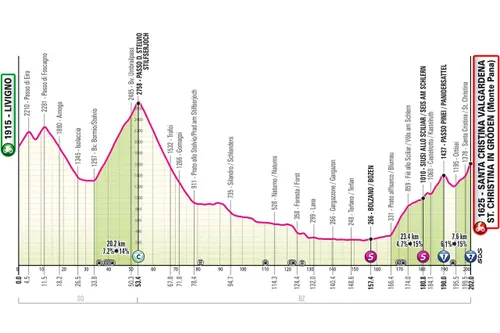
Stage 16: Livigno - Santa Cristina Valgardena, 202 kilometers
The 16th stage kickstarts the third week and in what way. The start in Livigno is very explosive with two small ascents right from the starting line. The grupetto will start to form itself right away, and riders not only have 202 kilometers on the menu, but they will also need to be on the rollers before the start as the climbers will try to break away right away.
This is the stage that was in the mouth of many upon the route reveal. Because the Passo dello Stelvio is featured, but in a location of the stage where it is unlikely to make any meaningful impact. However it will nevertheless be an interesting sight to behold. The beautiful Alpine ascent is always a highlight wherever it's featured... 20 kilometers at over 7%, the summit at 2758 meters of altitude... A brute. But it's summit comes with a whole 149 kilometers to the finish.
The riders then go down a very cold, very long and very technical descent. Flying down the Stelvio is not a common sight, but it will be the case here. After the descent the riders keep going down actually. The riders will lose a whole unbelievable 2500 meters in altitude, before tackling another set of climbs where the day should be decided.
Incredibly, the Stelvio is not the longest climb of the day. This will instead be the Passo Pinei. This ascent is 23.3 kilometers at 4.7%. The first 7.2 kilometers average 7.2%, they are hard but it's still rather far from the finish to make differences. A long false-flat section will follow. The final section of the climb is 5.5 kilometers also at 7.2%, it has a 15% ramp. On this section yes, attacks can absolutely happen, at this point in the day few riders will have the legs to push a higher gear. The climb ends with 12 kilometers to go.
But as the previous day of racing, the final ascent is yet to come and will be smaller, and steeper. The climb to Monte Pana is 6.5 kilometers long at 6.2%. The final 2 kilometers average 12%, an incredibly steep finale to a brutal day on the bike; many riders may in fact just wait for this location. It can, despite being short, make serious differences.
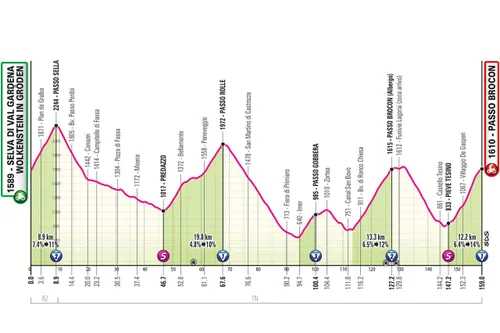
Stage 17: Selva di Val Gardena - Passo Brocon, 154 kilometers
Stage 17 is another contender for queen stage. 154 kilometers with five tough ascents. It is the third consecutive high mountains day and dare I say the hardest of them all? It is a day with no flat roads, just up and down mountains throughout several hours.
The riders start off the day immediately with a tough climb. The Passo Sella is 8.9 kilometers long at 7.4%, the stage starts at it's base and it goes up to 2244 meters of altitude. A lot can already happen here, strong climbers and GC contenders will try to take advantage and set off from the peloton.
A long descent follows, into the second of the day which is also the longest. The Passo Rolle is 19.8 kilometers long at 4.8%, with a rather flat section in it's middle, and two steeper ones in it's start and finale. Finishing with 90 kilometers to go, it gives way to a technical descent which leads straight into climb number 3.
This will be the Passo Gobbera, the easiest of the day's ascents; it's 5.7 kilometers at 5.8% and ends with 58 kilometers to go. A warm-up for the final mountain of the day. This will be the Passo Brocon, but the ascent will be climbed through two different sides.
The first of which ends with 31 kilometers to go. It's 13.2 kilometers at 6.4%, a difficult climb but taking into consideration the difficulty of the last one; it should still be somewhat of a warm-up.
The final climb, coinciding with the stage finish, is where the serious damage can be done. Through it's hardest side, this time around the Passo Brocon can make massive differences. The climb is 11.9 kilometers long at 6.5% but has a portion which is significantly harder.
The climb does not end at altitude but it does feature 4 kilometers at over 10%. This in itself could make huge differences, but it comes in the middle of the ascent. Attacks will come here, and there will still be a few kilometers before the finish line where they can grow even further.
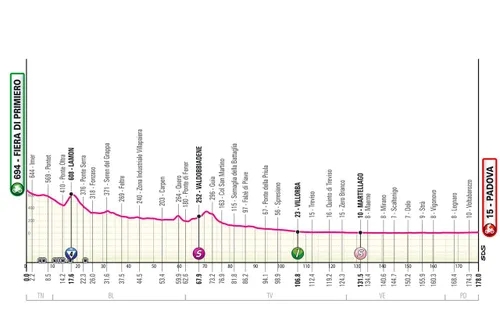
Stage 18: Fiera di Primiero - Padova, 166 kilometers
As tradition, the final week features a pan-flat day between the mountains. This time around it takes place in the Veneto region between Fiera di Primiero and Padova. It's 166 kilometers will suit the sprinters, but breakaways have often succeeded on this kind of day...
A very fast day awaits the riders, but it will be warmly welcomes after so many difficulties in the past days. Here we find the opposite, four hours of racing on flat roads. Pan-flat final half of the day means the sprinters will have little to worry about in terms of being put into difficulties.
If the peloton does manage to bring it back to a sprint, they will find a rather technical one. In Padova, the riders find a fast left-hander with 900 meters to go, a roundabout and then another fast corner with just under 500 meters to go. Leadouts will be crucial here, experience too. A fast and flat sprint should decide the winner of the day.
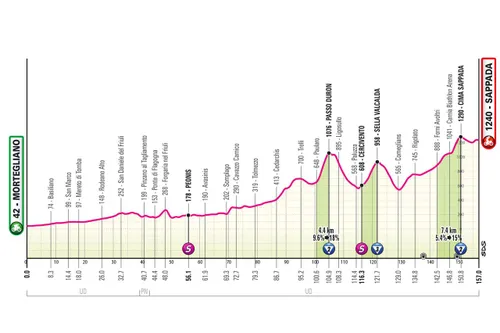
Stage 19: Mortegliano - Sappada, 164 kilometers
Stage 19 is a mixed day. Most likely to the breakaway opportunists, it lacks serious climbing to make difference among the big GC riders. However, the combination of three climbs before the finish in Sappada will ensure that this remains a day for the climbers.
However, many will be thankful that the first half of the stage is flat. The pace isn't expected to be crazy over the first hours of the race, allowing the riders to recover a bit from a very hard race. However in the second half of the day things get serious when it comes to deciding the outcome of the day.
The Passo Duron is the toughest climb of the day; 4.4Km at 9.6%... But it ends with 52 kilometers to go. Perhaps too early to go all-in for the stage contenders, both in the head of the race and peloton. It will split the race with no doubt. A quick descent then leads the riders into the Sella Valcalda which is 8.9Km at 3.7%, summitting with 35Km to go. A fast descent and then a gradual rise into the final climb follow.
This will all lead to the Cima Sappada, which is 8.5Km long at 4.7%, a climb of two halves but the final 2.8Km average 8.5%. This can create differences, meaningful ones, and the stage should be decided here. If not, there are still 6 kilometers to the finish - mostly flat - where riders can unite or be caught before what could be a flat sprint.
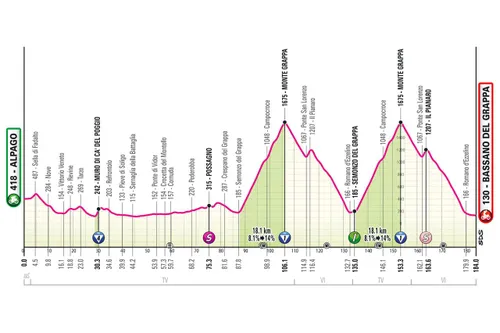
Stage 20: Alpago - Bassano del Grappa, 184 kilometers
The final mountain stage of the race, a quite different one than the normal. The Corsa Rosa's final mountain challenge will be on one of the most epic Italian climbs, which will be tackled twice. But the day of racing is long, starting in Alpago.
Early on, the riders climb the famous Muro di Ca' del Poggio. Far from the finish and possibly not important for the day's outcome, but a breakaway may still be formed in it's slopes. The climb is tremendously popular and, with 1.1 kilometers at 11%, can still see riders attack to try and jump across to the head of the race.
But the focus on the day is on the Monte Grappa. And what a beast it is. The ascent is 18.1 kilometers long at 8.1%, without any meaningful resting areas. It is by all means a gruesome climb and it's final 3.5 kilometers average almost 10%, and is where it's toughest ramp of 17% is located. All-in-all, it will destroy the peloton to bits. But this will only be the first of two. It first summits with 78Km to go.
Then, the riders climb up it's slopes once again which will ultimately be finished with 31 kilometers to go. This will be the final categorized climb of the Giro and with no doubt one of the hardest.
The descent is extremely technical and rather long. In fact, there is a very explosive 1.5-kilometer climb halfway through the descent which averages over 9%, an actually hard climb which is shadowed by the monster that comes before. In any way, differences can still be made in the dozens of hairpins of the downhill, which is 25 kilometers from top to bottom - and most of them, steep.
The riders end the descent only with 5 kilometers to the finish, that still go downhill a little bit. Very quickly the riders finish the stage in Bassano del Grappa, with the overall classification finally sealed.
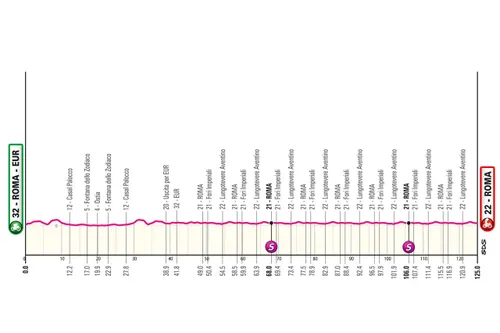
Stage 21: Rome - Rome, 126 kilometers
The riders fly into Rome for the final day of the competition, where they will face a circuit finish where the sprinters will have their final shot. It is a day for celebrations among those who made it all the way into the final day of racing.
On the menu, no climbs. Just 126 flat kilometers ending in Rome. The peloton finds a final circuit which ends next to the Colosseum. It is a technical one, with gentle cobbled pavement.
We've got quite a few corners in the final kilometers, an urban sprint; the final turn comes with only 300 meters to go. It is not sharp but positioning into it will be key, as the riders will launch their sprint only a few seconds after it. All about positioning into this one.

Map Giro d'Italia 2024
claps 7visitors 5
Just in
Popular news
Latest comments
- I also think he won't get the chance. By the time Tadej stops winning other riders younger than Remco will take his place as the top GC contenders.Renz07-01-2026
- Too bad
 ChillingCyclist07-01-2026
ChillingCyclist07-01-2026 - Heck yea. He is still getting better. He started pretty late in pro cycling so he probably still has some room to improve. Last year was his best yet despite only half a season. Four stage races ( one a GT). Worst GC result 4th.mobk07-01-2026
- Was better prior to last year...
 leedorney06-01-2026
leedorney06-01-2026 - Always been a weird team
 leedorney06-01-2026
leedorney06-01-2026 - "there is nothing special about Van Aert's ride to Montmartre." So one of the heroes of the sport winning an iconic stage in the TdF isn't even a bit special?mobk06-01-2026
- Add that to the injury history plus his age and Wout has tough year ahead of him.Cyclingsbestfan06-01-2026
- That was the beautiful thing about the pandemic... Zero spectators and racers could race. The camera microphones were able to pick up the labored breathing of the athletes.
 Front24206-01-2026
Front24206-01-2026 - Any reason why the law should treat different categories of people differently? Don’t we have enough spite and discrimination already, including in justice systems?Mistermaumau06-01-2026
- Marriage & children will bring a cycling career to an end.
 Front24206-01-2026
Front24206-01-2026
Loading
Regione Piemonte will host the Grande Partenza of the Giro d'Italia 2024! Opening stage on 4 May with start in Venaria Reale. La Regione Piemonte ospiterà la Grande Partenza 2024! Si parte il 4 maggio da Venaria Reale. 👇Thread 👇 #Giroditalia #GrandePartenza @regionepiemonte
3 Comments


